

As a result of the global pandemic, many firms have been compelled to adopt a digital strategy. If you're just starting out in the world of online retail, you may be wondering if eCommerce marketing is right for you. Online sales are rising to new heights. Consumers' shifting behavior is making it more difficult for firms, that don't have clear eCommerce marketing strategies to compete with.
Increasing traffic and conversions are the ultimate goals of every online store. Even if you have a basic strategy in place, deciding which marketing methods to employ can be a challenge.
Once your eCommerce website design is ready you need to market your products to drive sales. This is why we've put together an ultimate guide on eCommerce marketing and tips for how to implement each method. The suggestions themselves range from simple acquisition to increasing the number of repeat purchases from your current customers.
Ecommerce marketing is the act of promoting a firm that sells its product or service online.
Social media, digital content, search engines, and email marketing are all effective tools for e-commerce marketers to get customers to their sites and encourage them to make purchases.
As a prelude to our discussion on how to implement an ecommerce marketing plan, let's review the definition of e-commerce advertising and its role in ecommerce marketing.
Getting customers to your website is only the beginning of ecommerce marketing. In order to keep customers coming back for more, you'll need to make the online purchasing experience as enjoyable as possible.
Social selling and mobile apps are examples of this. A coherent, frictionless digital experience is your ultimate goal, regardless of how or where your customers find or purchase from you.
Looking for eCommerce Advertising Services?

Like advertising, ecommerce advertising goes under the marketing umbrella; when utilized together, you can more effectively reach your audience members to drive conversions and raise brand awareness.
Ecommerce marketing, as described in the definition above, is to raise awareness of your product or service and encourage people to take action.
As for ecommerce advertising, this includes the tactics you use to promote your product. When it comes to internet advertising, these ads can come in the shape of banners, display ads, or rich media ads.
The most important thing to take away from this is that implementing ecommerce advertising as part of your ecommerce marketing strategy is a highly effective approach to focusing on your product or service promotion.
Anyone who has expressed an interest in your brand or ecommerce products is considered an ecommerce marketing lead. Therefore, there is a good chance that they clicked on one of your Twitter ads and ended up on your website.
They may not have given you their phone number or e-mail address. So far as the number of touchpoints is concerned, you don't actually require it. Ecommerce lead generation often entails more on-page optimization than collecting email addresses through lead magnets and other incentives.
You need to figure out who your ideal customer is. One of your primary goals while building your online store's customer base is to identify people who are most likely to make a purchase. And with that, I bid you farewell for now.
On the other side, a marketing lead refers to a person whose contact information you've gathered. You can keep in touch with them via email or other means in order to encourage them to make a future purchase from you.
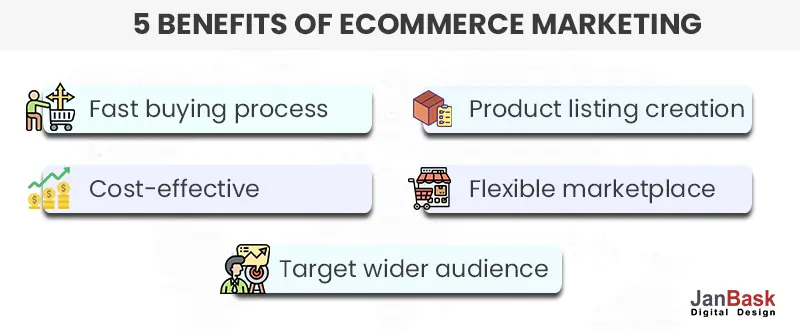
Target leads are more important in e-commerce than market leads, but you still need to know about both. For example, athletes, fitness enthusiasts, dieters, and gym newbies are all potential customers of a sports apparel business. In addition, the demographics of e-commerce customers are often more diverse than those of traditional firms.
As of right now, you need to realize that you need to specify who your ideal customer is. Find out what they have to offer in the form of personal attributes and traits. You may have a large number of potential customers. Maybe you only have a few. In either case, spend some time writing down your buyer personas.
For most purchases, the customer journey is a lot shorter. The shorter the distance, the lesser the cost of your merchandise. More traffic and leads can be generated if you understand the buyer's journey. You must know what will draw customers to your e-commerce site and persuade them to buy.
That is to say, the goal of generating online sales leads should be expanding your consumer base and providing them with compelling reasons to shop at your site. And with that, I bid you farewell for now.
You should expect to generate leads and eventually close sales with the right products, enticing copy, and a seamless checkout procedure.
You will see some popular marketing channels and how you might use them to create an online store to get an idea of what marketing for ecommerce looks like.
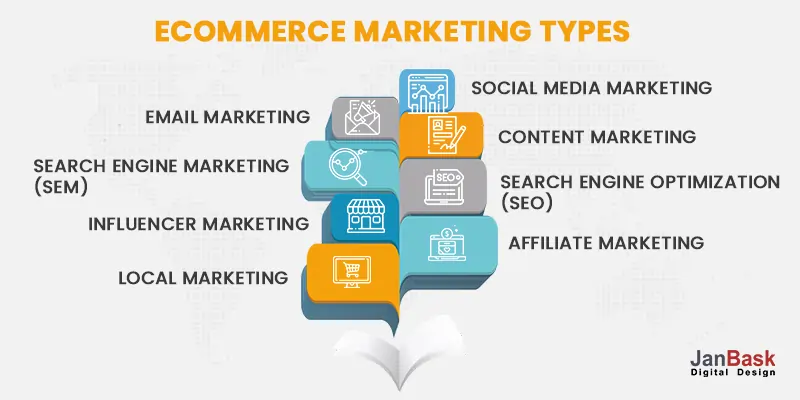
Brands, publishers, contractors, and developing companies all have social media sites on the most prominent networks today to engage with their audience and share material that the audience is interested in.
Your campaigns may look different, and not every social network is a suitable fit for you as an online entrepreneur or e-commerce marketer.
Because eCommerce sites must feature their products in a visually appealing manner, the success of your social media marketing efforts is directly tied to the quality and quantity of the photography you employ.
Instagram is a good medium for eCommerce firms since it allows you to share high-quality product photographs and extend your product's reach beyond the buy page. Create shoppable content for your social media postings, which is content that allows users to buy right away. This might contain anything from well-placed display advertising in users' social stream to additional tags that bring viewers straight to a purchasing basket. Using these approaches, you can reduce the amount of time it takes to complete a transaction.
Businesses that currently solicit client feedback through their online store will find that using a Facebook Business Page to highlight their products is a natural match. Facebook's Business Page is a great place for companies to showcase their customers' positive feedback on their products.
Creating compelling content is an effective way to attract new customers. It is more likely that a customer will come across your content if you have more of it available.
When you hear the term "content marketing," you may think of blogging and video marketing—a material designed to increase your website's search engine rankings and answer questions about your industry.
Are articles and videos truly necessary if you're selling a product on the internet? Do you think so? Here are some tips for eCommerce content marketing.
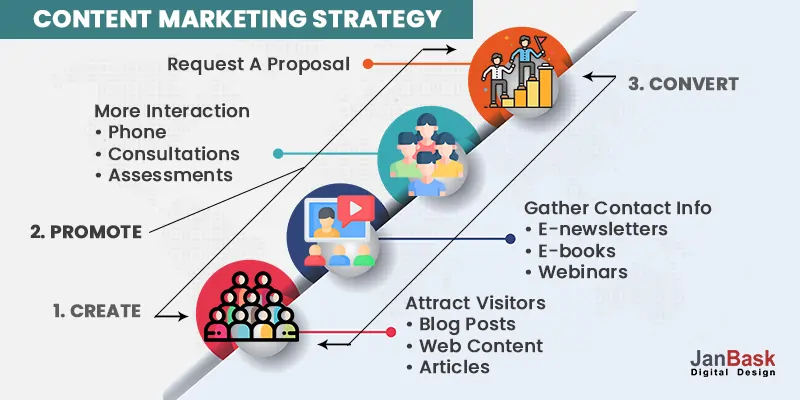
Your Selling Point is your Product Page
Your product page copy should be optimized for search engine results. Short, product-related keywords that include the name of the product should be used on your product pages to improve your search engine rankings. For example, a Google search for "4 pack socks" is more likely to bring up product pages like yours if you include that term on the page.
Make sure that your page titles, headers, and picture alt text focus on the proper keywords, so search engines know to return your eCommerce store for the right query.
Blogs That Define Your Expertise
Do some research and provide interesting content on your blog. For example, writing blog entries about "how to organize your closet" might interest everyone who is looking to expand their storage space, no matter how far along they are in the process they are.
In order to keep your readers engaged, you may produce posts like "how to select the correct closet" or a downloadable "closet set-up checklist" that will move them into contemplation and generate leads.
Guest Posting For More Visibility
Also, your items can be seen by relevant audiences through guest posting. Submitting guest posts will also assist your e-commerce site gain more domain authority, letting search engines know that it is a trustworthy one.
You'll need to look for websites that rank highly for keywords connected to your product to promote it. Creating a whole post is not always necessary. Instead, add insight to a piece that is already relatable by giving a video or an infographic that links to your site.
FAQs Section
Adding a keyword-rich FAQ section to your website’s homepage is a good idea. If your audience has questions about your product, you should be the one to answer them. Your website's FAQ page should be filled with answers to high-volume, long-tail keyword searches. A successful online store relies on a combination of authority and traffic.
Over a billion people are on YouTube at any given time. Your target audience is most likely among them. It's also the second-largest search engine behind Google. YouTube is the place to go if you want to reach a large, engaged audience. Decide on a topic based on popular search terms, then post videos that are both relevant to your product and of value to your target market via your website.
An excellent choice here would be tutorial videos showing existing customers how to use your product. These movies could increase customer satisfaction and foster long-term relationships with website visitors by demonstrating how to utilize your product effectively.
According to a Hubspot survey, 54% of customers want to see brands produce more video content. To get the best of both worlds, take advantage of native video advertising.
Both search engine optimization (SEO) and sponsored advertising are part of SEM. When it comes to SEO, you have to know Google's ranking system in order to optimize your content. In contrast, with SEM, you may pay for high rankings in search engine results pages through pay-per-click (PPC) campaigns, display advertising, or product-specific ad campaigns (think Google Shopping).
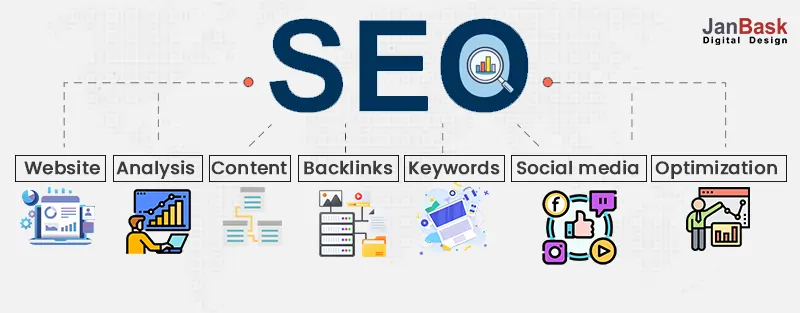
Pay-per-click advertising campaigns on Google guarantee that anyone who searches for the keywords you target will see a link to your site. Because you pay Google every time someone clicks on your result, you should see a substantial return on your investment.
For this reason, many e-commerce businesses use Google AdWords to advertise their products. In order to increase the possibility of customers making a purchase before leaving the website, the campaign places searchers right in front of the product when they click on an ad result.
While email marketing is a relatively new concept in the world of digital marketing, it is still highly relevant to ecommerce businesses today.
It is possible to create a successful drip campaign for subscribers who are categorized by interest or stage in the buyer's journey and then let your email campaign do its magic. It is one less thing to worry about on your already long to-do list when it comes to marketing your business.
Even so, it is critical that you preserve the confidentiality of your leads by being cautious with your email list. In an era where data protection is of the utmost importance to internet users, not all commercial emails are welcomed in their inboxes. Therefore, a great deal of caution must be taken by ecommerce marketers when adding website visitors to their mailing list.
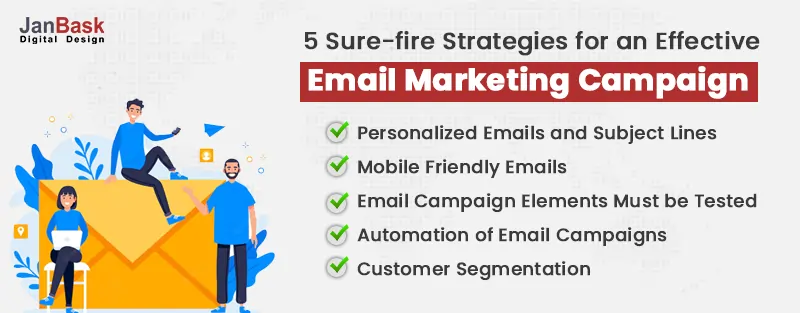
Ecommerce marketers can make use of email marketing in two ways.
After-Sales Support
You may keep the dialogue going with customers who have purchased from your site and accepted to receive emails from you during checkout by sending a follow-up email a few days after they receive the product.
A post-purchase follow-up also demonstrates your concern for them beyond a transaction and your company's interest in their success with your product. When customers provide you feedback on their purchase experience, you can use that information to improve the shopping experience for future customers.
This form of email can benefit from asking the recipient to write a review of your product or to read instructional content on how to utilize your goods (those YouTube videos you created would be perfect here).
Shopping Carts That Have Been Left Abandoned

It's possible that sending an email to a consumer who's abandoned their shopping cart will help you figure out what's wrong and keep them coming back.
You may want to send a kind email to remind them to finish their transaction, give assistance, or propose other relevant products in order to get their attention and their browser back to your e-commerce business when they're in your shopping basket.
You can target your audience with influencer marketing if you know who they are and how they affect your customers. There are a variety of ways to use the term "influencer" in the context of Instagram, but it's most typically used to describe an Instagram user with at least a few hundred thousand followers.
Influencers establish a following of people who know, like and trust them. Therefore, it's simple for them to promote your online goods via a sponsored post or recommendation.

81% of brands use affiliate marketing, and e-commerce websites are particularly attractive candidates. Affiliates are businesses or individuals who assist with the online sale of your goods in exchange for a percentage of the sales.
In contrast to most social media influencers, affiliates increase interest in items by employing more traditional marketing methods like advertising and word of mouth. In addition, their pages on your product are often promoted by paid advertising, content marketing, and other techniques; it's like having a team sell for you.
With local marketing, you can focus on the locations where most of your potential customers are located (if there are big populations of them in one area) and offer incentives to those potential customers. This is an often-overlooked technique for ecommerce enterprises.

You may find out where your customers are by using tracking cookies. Afterward, provide potential consumers in the regions where you have warehouses or shipping facilities with low-cost (or no-cost) shipping options. When it comes to attracting new customers, the incentive might just be the ticket.
In addition to the standard ways of marketing we discussed above, here is a complete eCommerce marketing guide that you may use to attract customers to your online store. Let's have a look at some best eCommerce marketing tips to promote your e-commerce business.
Yes, e-commerce store operators must produce content to attract customers. It's not only about the eye-catching sales pages. You want to share your knowledge, inspiration, and news with others.
No matter what kind of content you're writing, SEO is important. Nobody will locate your material if you don't optimize it for search.
You may already know how to optimize your instructive content, but what about your sales pages? It's usually a good idea to utilize keywords and metatags that are relevant to your business to help customers find your products.
For ecommerce lead creation, search advertising is a great option. They're a lifesaver if you use ad extensions, which is highly recommended.
You can incorporate additional information in your ad by using an ad extension. Sitelink extensions, which add additional links to certain pages on your website, appear in Google search results for their adverts. These extensions give your customers a better idea of what you have to offer. For example, your sales and discounts page can also be linked to if you have one, as can any other page that could boost sales.

When it comes to incentives, you don't want to lose a fish you've just caught. So it's important to provide visitors with a reason to stay on your site once they arrive.
Offers such as free delivery or a $10 off voucher for first-time buyers are two examples of this type of promotion. Providing a list of products that are currently on sale is another option.

Ecommerce lead creation is far more effective if you can entice visitors right away.
You may only have one chance to close the deal when it comes to ecommerce lead creation. It's a given that you want to keep your visitors on your site as long as possible.
Trying out a variety of opt-in forms can be beneficial. For example, you can follow up with your lead and let them know you still exist if you get their contact information.
In addition, place internal connections across your site, particularly at the bottoms of pages or in places where people tend to stop scrolling. Use enticing anchor language to pique people's interests.
Think about creating a free tool that your leads may use that does not require them to opt-in, such as photographs of related products. For example, consider adding a sizing chart to a clothes site where visitors may enter their measurements.
Using cookies to stay in touch with your customers is a smart move. Retargeting advertisements and other methods can be used to re-engage users who have already visited your site by depositing cookies on their computers.
The freebies offered by certain firms are more enticing than those of others. Often found in the lifestyle business, they are a common sight.
Social media users love freebies and contests. So even if the event draws tens of thousands of participants, people still expect freebies. It's as simple as handing out one of your products and paying for the shipping costs. And with that, I bid you farewell for now.

Run a contest if you want to put in even more effort. For example, ask your customers to upload photographs of themselves using one of your items. You can choose a random winner for the contest.
It's easier to generate leads if you pay attention to how visitors use your website. Make use of this information to improve the design of your website so that it focuses on the areas that your users are most interested in. For example, you may use Google Analytics to see which links in your navigation bar are getting the most attention and then reposition them or make them larger and more distinct.
Keep in mind that a first-time visitor to your website could turn into a buyer. Make sure they have what they need, so they don't have any excuse to leave.
In order to increase sales and lead generation, you need to optimize your ecommerce checkout experience. Even if the shopping cart is abandoned, a user's email address may be obtained. Sending a follow-up email is an option, as well.
Allow visitors to continue as guests if they choose, but encourage them to register first. Else, you may lose out on sales.
Streamline the rest of the process to be as simple and devoid of obstacles as possible. There are a number of things you can do to improve the checkout process, such as offering more payment alternatives or declaring your shipping policy before the checkout process begins.
Do your best to amass an enormous number of email addresses, but be cautious about how you put them to use in your marketing campaigns.
Keep in mind that your marketing message should be used wisely.

An explanatory email, for example, can help if you have a pricey or sophisticated product. Instead, use an instructional video or at least a link to an explanation of the product. Consider offering a coupon code or free shipping right up front to get customers in. Lead nurturing in ecommerce does not necessitate a lengthy introduction.
Instead of using a typical lead magnet, consider using a monetary incentive to encourage subscribers to provide their email addresses. For example, when a new consumer joins your email list, you may offer them a discount on their first purchase.
Personalization is the process of modifying your outputs to meet the specific needs of your target audience by discovering ways to cater to them within the marketing materials you already have.
A prospect's name in the subject line of an email, content or products recommended based on the behavior of a visitor, or even smart content displayed on a webpage when a user visits for the second time or has moved along their buyer's journey, are all examples of this type of personalized content for visitors.
Customers will be more likely to make a purchase if they don't have to hunt for what they want; instead of having to look for it, you'll put it right in front of them.
Suppose your consumers were able to market for you for nothing? User-generated content, or UGC, is exactly what it sounds like. It's all about making it easy for your customers to spread the word about your company. An actual following of people interested in what you have to offer can be built using this method.
A long-term customer is a valuable asset, and who doesn't want their business to keep coming back? Loyalty programs are designed to encourage customers to return to your business by offering them appropriate discounts and special offers. It takes time and effort to develop a customer loyalty program, but it pays off in terms of repeat business, user-generated content, referrals, and client retention.

When creating a customer loyalty program for your ecommerce store, there are a few things to keep in mind. Customers show their loyalty in several ways, such as making repeat purchases or mentioning your company on social media. It's also a good idea to think about how you may reward your customers for their loyalty.
You've probably heard of chatbots. Live chat strategies can be used in two ways. Depending on the size of your business, you may be able to have a live person available to talk with visitors to your store.
You may use live chat while customers are browsing your site so they can obtain answers right away and when they're checking out to help them avoid any last-minute objections before they make a purchase.
Responsive design is a must for any e-commerce strategy, no matter how small or large. Your eCommerce marketing strategies will be accessible on any device and will be easy to use (e.g., laptop, smartphone, iPad, or tablet).
To put it another way, in today's world, where people are always on the go, they will be able to easily read and browse your content, no matter where they are or what device they use. All you need to do is to get an eCommerce website design company on board.
An industry benchmark can be used as a reference point to compare your goals based on industry, geography, business size, and more. Compare your website traffic, click-through rates, conversion rates, and customer acquisition costs to other eCommerce businesses in your industry.
Marketplaces have long been the go-to site for internet shopping. In 2021, the world's top online marketplaces will account for two-thirds of global ecommerce sales, selling $3.32 trillion in items.
With the help of online marketplaces like Amazon and eBay, your brand can be found by millions of individuals all over the world. Customers who are regulars on marketplaces are more likely to buy from you if you're on a channel they're familiar with. Despite this, there are substantial costs and restrictions attached to the purchase.
Using marketplaces as a supplement to your branded store is advised for ecommerce brands. To entice customers to buy from your website instead of the marketplace, create appealing listings that showcase your brand and include custom packaging inserts in marketplace orders.
Everyone's ecommerce marketing strategy should include TikTok. In the final quarter of 2021, TikTok had 173 million first-time installs across app stores and over one billion monthly active users, making it as strong as major social media marketing platforms.

For a business to succeed on TikTok, it must post authentic content. Authentic videos, such as those you find on Instagram tend to garner more attention and engagement than professionally manipulated ones. In terms of building relationships with an audience, TikTok stands out.
SMS marketing refers to the practice of disseminating promotional material via text message to current and potential clients. Special offers, discounts, notifications, and product information are all part of the point of these messages.
SMS marketing is now the most successful in the e-commerce industry. As many as 70% of consumers believe that SMS is an effective method for firms to gain their attention.
Having a responsive design isn't enough to make your store mobile-friendly. You should create your site with mobile visitors in mind from the beginning. Magento is one of the most mobile and tablet friendly platforms that you can build your ecommerce platform on.
To make it easier for visitors to add products to their carts, you may have a larger Add To Cart button on all mobile product pages. In addition, mobile users will appreciate shorter loading times and an easier zoom experience if your photographs are presented in a different format. Do some research and leverage ecommerce website design services to get started.
As a result of the advent of Siri, the use of voice search has skyrocketed. According to current projections, retail sales in the United States and the United Kingdom are expected to reach a whopping $40 billion by 2022. Considering this, optimizing your website for voice search is vital to reap the benefits of this burgeoning e-commerce sector.
Here are a few quick and easy SEO tips for using voice search:
You're literally throwing money away if you don't make use of CRO. Increasing your conversion rate will allow you to make more money from your current traffic. This money can be used to acquire more traffic, which in turn generates more revenue, and so on. For your marketing efforts, CRO is a rotor.
There are several ways to boost your revenue, but one of the most effective is increasing your conversion rate.
Your clients' desire lists can be bolstered by carousels. Customers who aren't quite ready to make a purchase can nevertheless add things to a wishlist on your site.
Use emails to remind customers of goods on their wish list, to let them know when supplies are running low or returning, or even better, to let them know when an item has gone on sale.

Adding the ability to exchange wish lists is a bonus. Amazon is the undisputed monarch of this eCommerce marketing technique with their shared wish lists. By making your customer's wish lists shareable, you may increase brand awareness and interest in the things you offer. To top it all off, your customers' friends and family will be bringing them to your shop to buy gifts for them.
Most e-commerce businesses have developed buyer personas and a short list of ideal clients.
Podcasts have a certain niche audience, and all of these demographics are relevant to that audience. Set up advertising partnerships with podcasts that your clients are likely to listen to. Instead, you can hire a podcast advertising company or an ecommerce development company to locate the most relevant podcasts to your business.
While shoppable Instagram posts are familiar to most eCommerce marketers, Pinterest advertising is a fresh option that has given the wishlist social media board new life.
Product Pins drive 40% more traffic to e-commerce websites. Individual product photographs are ideal for using them.
The term PR in ecommerce marketing may sound antiquated, but it isn't. Publicity in print and online media, especially during the initial stages of your company's existence, is a significant advantage.
It may be a founder interview, a mention in a listicle (X gift ideas for Y), or a photo shoot for your headliner. The ultimate goal is to raise consumer awareness of your brand and generate interest in your goods.
After launching or redesigning your e-commerce site, you should test the layout, language, and placement of conversion elements to see what works best. Make it easy and simple for customers to check out, and make it clear how they can purchase your products, when they come to your website.
Even the strategic placement of icons and elements should be tested. You can conduct usability testing in a variety of ways.
Prospective buyers are more likely to return to your website if they've already expressed an interest in your products. Customers who have previously visited your website are tracked and ads are shown to them as they browse the internet in an effort to bring them back to your site. They are much more likely to make a purchase if they return to your website.
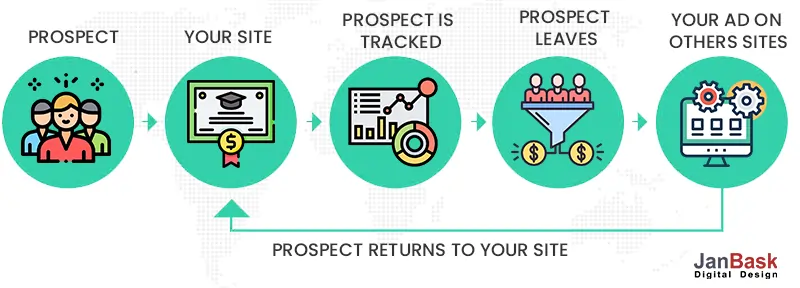
Make your ads as specific as possible when running a retargeting campaign to get the most bang for your buck. Was there a specific item on the customer's wish list? Use the product's page URL as a link in the ad. When it comes to SEO and PPC marketing, it's crucial to show the user exactly what they're looking for as soon as they click on your ad.
A successful eCommerce project requires a deep understanding of the customer, and the ability to translate that knowledge into a compelling online experience. Outsource eCommerce marketing services to a professional for better results. They can guide you with the right strategies and the right eCommerce platform to use.
With more than a decade in the business, our eCommerce marketing company is your one-stop shop for marketing, advertising, and online store setup. We offer a variety of tailored solutions to suit your needs.
Here are some of the best marketing tips for eCommerce that you may use to improve your plan.
An effective approach for reaching clients, increasing the average order value, and boosting revenue is, without a doubt, possible. All of them are areas in which you can make progress. Using the eCommerce marketing suggestions above, you can construct a profitable eCommerce store that provides a pleasant shopping experience for customers.
Looking for Branding Services for Your eCommerce Business?

C
I am intrigued after reading this blog. This has some really great ideas.
J
I never knew I could try so many things to market my ecommerce business.
A
Very nice blog.
Z
Thanks for sharing the tips.
E
What type of tools would you recommend for email marketing?
J
Thanks for your feedback! You can contact https://www.janbaskdigitaldesign.com/contact-us for your queries.